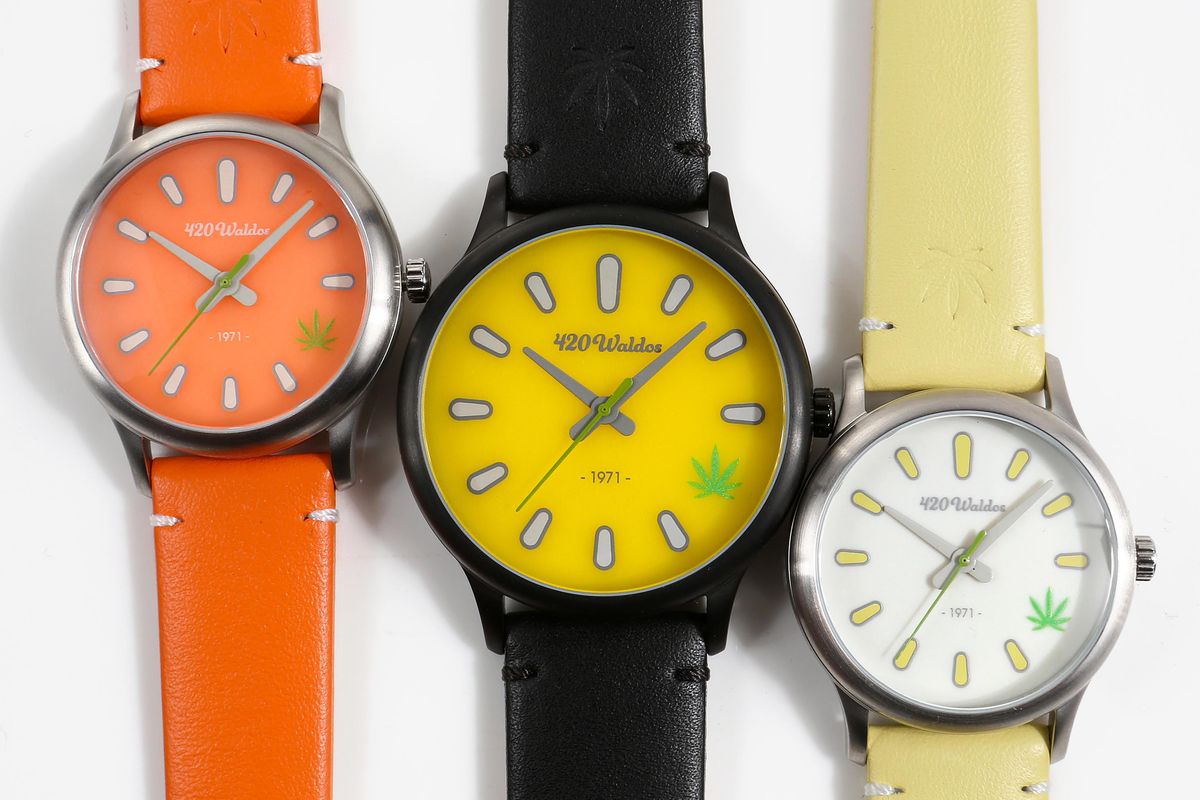Where are the Waldos? 420: The invention of a secret code that’s become part of our lexicon

Electricity, the telephone and the internet are examples of inventions that are boast-worthy. And then there is the debate about who came up with “420.”
It’s high time somebody cleared up who invented the meaningful number. A bunch of folks have recently claimed to have thought of 420, slang in cannabis culture for the consumption of marijuana at 4:20 p.m.
A quintet of pals dubbed the Waldos, from Marin County, California, lay claim to adding 420 to our lexicon.
“There are so many people crawling out of the woodwork claiming responsibility for coming up with 420,” the Waldos’ Steve Capper said. “But they don’t have a shred of proof. We have documents and letters sitting in a bank vault that prove we came up with 420.”
When asked about the intrinsic value of their invention, Capper and his Waldo pals, Dave Reddix, Jeffrey Noel, Larry Schwartz and Mark Gravich, who were all on a conference call from Marin County, paused.
“We keep it in the vault because we don’t want something to happen to it,” Reddix said. “If we kept it in one of our houses, what if there was a fire?”
Odds are it would be a rather pungent aroma emanating from the house during the blaze extinguished by a group of giddy firefighters.
“Exactly! I don’t want anyone to break into my home looking for the documentation, because then they might steal my weed, too,” Capper cracked.
It has been 49 years since Capper and his friends added 420 to the dictionary as San Rafael High School students in Marin, the idyllic, laid-back county across the bay from San Francisco.
The quintet would meet by a particular wall outside school, which inspired the name “Waldos.” The friends heard about an abandoned cannabis crop based on a treasure map made by a member of the Coast Guard who was harvesting marijuana.
Their meeting time was always 4:20 p.m, and the wisecracking pals’ secret code of 420 circled the globe.
Reddix became a roadie for the Grateful Dead bassist Phil Lesh. At 4:20 p.m., it was time for the Deadhead crew to relax with cannabis, and 420 spread throughout the worldwide network of Dead fans.
The Waldos sell watches, T-shirts, caps and rolling papers at 420waldos.com. The Waldo watches are particularly cool and feature an illumination system dubbed “Visible247” that was in development for 15 years.
Visible247 enables the dials to glow for at least 10 hours if exposed to 10 minutes of “light energy” from any light source. “It’s our way of contributing to a great cause,” Reddix said.
Each of the Waldos, who remain in Marin County, has had regular gigs for years. Noel is in the wine industry, Capper works in finance, Schwartz is in printing, Gravich is a commercial photographer, and Reddix is a camera operator and field producer for CNN.
“We have always done our own thing,” Capper said. “But we’ve always remained friends. We never lost touch, and we talk all the time and see each other whenever we can.”
The group, who would impersonate teachers, goof on peers and talk about what happened the prior evening on “The Tonight Show” while getting high together, still hang out and joke around.
But the difference between then and now is weed is legal in California. “We never envisioned that it (smoking cannabis) would be available like it is now,” Reddix said. “It was such an underground thing. We liked to take chances.”
Smoking dope was not the only risk the Waldos took during their salad days. The collective would embark on “safaris,” which were often outrageous adventures.
The Waldos ventured underneath the Golden Gate Bridge and jumped onto painters’ nets, which were designed to save those who fell from the iconic tourist attraction while giving it a fresh coat.
“We used the nets as our own trampolines,” Capper said. “It was nothing but fun for us.”
The Waldos also had edifying experiences while on safari. They visited a lab of scientists who were working on a hologram city.
“We treated that like it was a Bizarro Cub Scout trip,” Capper said. “We showed up at around 1 a.m., and we had a chance to see what they were working on, and they were thrilled anyone took an interest in what they were doing. It was a different world then.”
What a contrast it is between scoring marijuana then and now during the coronavirus pandemic.
“It’s incredible,” Capper said. “Back then you were a desperado if you had some joints. We’ve come such a long way. Marijuana is on the essential list now. Who would have ever thought this would happen?”
Anyone who would like to check out their 420 documentation can visit the Wells Fargo bank in San Francisco. The address? 420 Montgomery St., of course.
“It couldn’t be more appropriate, could it?” Capper said.